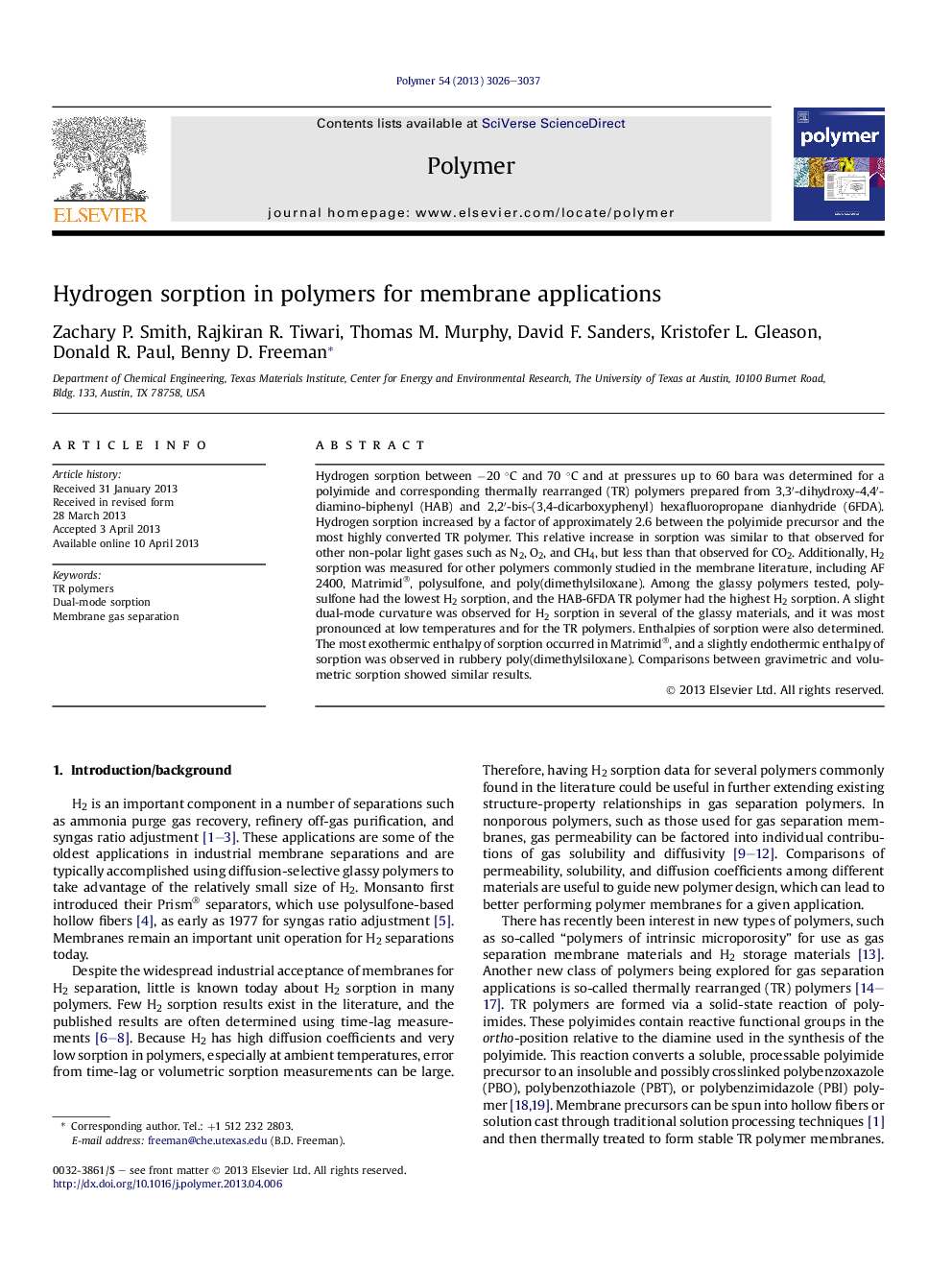| کد مقاله | کد نشریه | سال انتشار | مقاله انگلیسی | نسخه تمام متن |
|---|---|---|---|---|
| 5182387 | 1380988 | 2013 | 12 صفحه PDF | دانلود رایگان |
Hydrogen sorption between â20 °C and 70 °C and at pressures up to 60 bara was determined for a polyimide and corresponding thermally rearranged (TR) polymers prepared from 3,3â²-dihydroxy-4,4â²-diamino-biphenyl (HAB) and 2,2â²-bis-(3,4-dicarboxyphenyl) hexafluoropropane dianhydride (6FDA). Hydrogen sorption increased by a factor of approximately 2.6 between the polyimide precursor and the most highly converted TR polymer. This relative increase in sorption was similar to that observed for other non-polar light gases such as N2, O2, and CH4, but less than that observed for CO2. Additionally, H2 sorption was measured for other polymers commonly studied in the membrane literature, including AF 2400, Matrimid®, polysulfone, and poly(dimethylsiloxane). Among the glassy polymers tested, polysulfone had the lowest H2 sorption, and the HAB-6FDA TR polymer had the highest H2 sorption. A slight dual-mode curvature was observed for H2 sorption in several of the glassy materials, and it was most pronounced at low temperatures and for the TR polymers. Enthalpies of sorption were also determined. The most exothermic enthalpy of sorption occurred in Matrimid®, and a slightly endothermic enthalpy of sorption was observed in rubbery poly(dimethylsiloxane). Comparisons between gravimetric and volumetric sorption showed similar results.
Journal: Polymer - Volume 54, Issue 12, 24 May 2013, Pages 3026-3037
